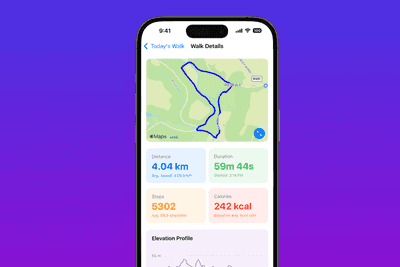The mobile app development industry has evolved significantly since 2008, primarily revolving around two major platforms: iOS and Android. As a leading mobile development agency in Glasgow, we've witnessed the emergence of various development approaches. Today, businesses face a decision when creating an app: native development or cross-platform development?
Each method offers unique advantages and challenges which can have a significant impact on your mobile app project's success. In this guide, we'll review the differences between native and cross-platform mobile development in 2024, showcase popular cross-platform apps, weigh the pros and cons, compare costs, and even consider an alternative approach.
Understanding native vs. Cross-platform development
Let's start by clearly defining what 'native' and 'cross-platform' mean in the context of mobile development.
Native development
Native mobile development involves building apps specifically for a single platform using the platform's core programming language, APIs, and development environment. For iOS, this means using Swift or Objective-C with Xcode, while Android development typically uses Java or Kotlin with Android Studio.
Cross-platform development
Cross-platform development allows developers to create mobile apps that run on multiple platforms using a single codebase. This approach typically involves frameworks like React Native, Flutter, or Xamarin, enabling developers to write code once and deploy it to both iOS and Android platforms (and potentially others like Windows and web).
Popular cross-platform apps
To illustrate the potential of cross-platform development, let's look at some well-known apps that have successfully adopted this approach:
- Tesla: The Tesla mobile app, built using React Native, allows users to control various aspects of their electric vehicles.
- Instagram: While initially a native app, Instagram has incorporated React Native for certain features.
- Shopify: The e-commerce giant's mobile app is an excellent example of a React Native implementation.
- Discord: This popular communication platform for gamers uses React Native for its mobile apps.
These examples demonstrate how cross-platform development can be effectively used by large, resource-rich companies to create high-performance, feature-rich applications.
At Add Jam, we specialize in React Native development, leveraging its wide adoption, excellent support, and vibrant open-source community.
Pros and cons of each approach
Native development
Pros:
- Optimal performance and responsiveness
- Full access to platform-specific features and APIs
- Better user experience aligned with platform guidelines
- Easier implementation of complex animations and interactions
- Day-one support for new features and APIs
Cons:
- Higher development costs for multi-platform targeting
- Longer development time
- Requires platform-specific expertise
- Separate maintenance and updates for each platform
Cross-platform development
Pros:
- Single codebase for multiple platforms
- Faster development time
- Lower development and maintenance costs
- Easier to maintain consistency across platforms
- Larger pool of developers familiar with technologies like JavaScript and React
Cons:
- Slightly compromised performance compared to native apps
- Limited access to some platform-specific features
- Dependency on third-party libraries and frameworks
- Potential delays in accessing the latest platform features
Cost comparison
Cross-platform development often has a clear cost advantage:
- Development costs: Native development requires separate codebases, doubling effort and cost. Cross-platform development's single codebase approach can significantly reduce these costs.
- Maintenance costs: Managing one codebase for a cross-platform app is more cost-effective than maintaining separate native codebases.
- Time-to-market: Cross-platform development usually allows for faster deployment to both platforms simultaneously.
- Resource allocation: Fewer developers are needed to cover both platforms with cross-platform development.
However, balance these cost savings against your project's specific needs. For high-performance apps or those requiring extensive use of platform-specific features, the long-term benefits of native development might outweigh initial cross-platform cost savings.
Is Mobile app development always necessary?
Before committing to mobile app development, consider whether a mobile app is essential for your project. Modern mobile web applications have become increasingly powerful and can often serve as a viable alternative to native or cross-platform apps.
Modern mobile web browsers can now access many features previously exclusive to native apps:
- Push Notifications (limited on iOS)
- Location Services
- Camera and Microphone Access
- Offline Functionality (via Progressive Web Apps)
- Home Screen Installation
For many businesses, especially those with limited resources or targeting a wide range of devices, a well-designed mobile web application can be a cost-effective solution that provides much of the functionality of a native app without the development and maintenance overhead.
Conclusion
Choosing between native and cross-platform mobile development—or opting for a mobile web solution—depends on various factors including your project requirements, budget, timeline, and target audience. While native development offers the best performance and access to platform-specific features, cross-platform development provides a cost-effective way to reach both iOS and Android users with a single codebase.
At Add Jam, we specialize in helping businesses navigate these decisions, offering expertise in both native and cross-platform mobile development, as well as progressive web applications. Our team can help you assess your specific needs and choose the most appropriate solution for your project.
Whether you're looking to develop a high-performance native app, a cost-effective cross-platform solution, or a powerful mobile web application, we're here to guide you through the process. Get in touch with us to discuss your mobile development needs and how we can help bring your digital product to life.
Related services:
Explore our project portfolio to see examples of our mobile and web development expertise across various sectors.






